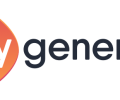One of the most valuable things that internet, e-learning and social media have brought us, is that you can learn what you want, how you want, where you want and with whom you want. Learning has shifted from push to pull. Not the teacher or the developer is in control but the learner is. I my view the (e)Learning community is still adapting to this new paradigm.
Plan economy versus market economy
The learner has shifted quickly from a planned economy (company plans all training programs) to a market economy (the learner decides). For him it’s easy, there are all kinds of new learning and information resources available through internet and social media. For the e-learning department this is much more difficult, most systems focus on planning and reporting and making the shift from collective learning resources to learning opportunities is a difficult task.
Eastern Europe
It’s a bit like Eastern Europe at the time of the ‘fall of the wall’. I have visited eastern Europe before 1989 quit a few times. You had supermarkets, but they had a very limited assortment. There would be one type of product for a certain need (one brand of sugar, one brand of water) and for a lot of needs they wouldn’t have a product at all. If you had enough (foreign) money you could buy almost anything at dollar shops or import it from abroad. You could compare this with the old centralized approach for learning. There is only one solution for a learning need and if we planned for it there is no solution add all.
In the period that followed the fall of the wall shops where quit empty. Internal production halted and they didn’t have enough foreign currency to import goods. People where already used to growing their own food, but that became even more important during this period.
It’s a bit like the situation we know have in the land of learning. We offer courses and training but learners are finding their own recourses, internet and the social media make that very easy. There is an increasing mismatch between supply and demand.
Conflict of interest
There is a growing conflict of interest between the learner and the learning departments. Form a corporations point of view planning and control are important, from a learner’s point of view it isn’t. They want to learn when, how, what en where they want. You can’t plan that.
The solution lies again in an approach where you don’t steer on input (courses) but on output (learning outcome). It doesn’t matter how they learn as long as it is effective and they can do their job.
We need to switch more to a demand driven learning environment. We don’t need more Learning management systems, but more Learning management systems. I do believe that this is one of the reasons behind the success of tools like Moodle; they offer a learning environment, not an environment to manage learning. Therefore we need to change our ‘learning landscape’. But that is the easy part. The difficult part is that we need to change the way we work and think. Not the planned transfer of knowledge is leading, but the individual learners need. At the same time we need to find ways to manage this and the answer is again by applying Outcome learning. Managers should steer on out the results of learning, not on the amounts of courses we create.
While writing this I realize that this would have been a good first post of this series, well that’s a disadvantage of learning by doing. Originally I had planned that this would be my last post in this series. But I will add one more with the vendors perspective.
This post is part of a series of post on this subject:
- Make e-Learning work: Outcome learning
- Make e-Learning work: Outcome learning (2)
- Make e-Learning work: Outcome learning (3): The managers perspective
- Make e-Learning work: Outcome learning (4): The developers perspective
- Make e-Learning work: Outcome learning (5): The learners perspective
- Make e-Learning work: Outcome learning (6): The vendors perspective




